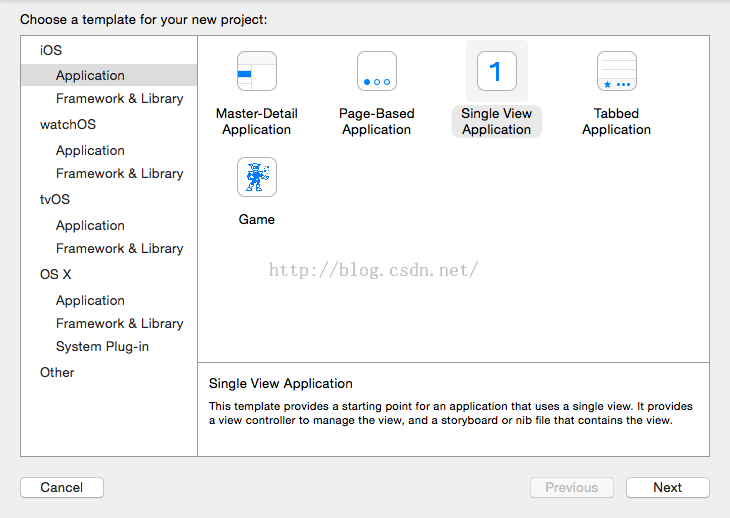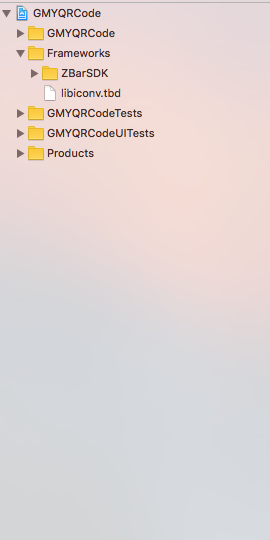Objective-C中NSArray的基本用法示例
NSArray的排序
復制代碼 代碼如下:
+ (id)studentWithFirstName:(NSString *)firstName lastName:(NSString *)lastName{
Student *stu = [[Student alloc] init];
stu.firstName = firstName;
stu.lastName = lastName;
return stu;
}
+ (id)studentWithFirstName:(NSString *)firstName lastName:(NSString *)lastName bookName:(NSString *)bookName{
Student *stu = [Student studentWithFirstName:firstName lastName:lastName];
stu.book = [Book bookWithName:bookName];
return stu;
}
- (NSComparisonResult)compareStudent:(Student *)stu{
NSComparisonResult result = [self.firstName compare:stu.firstName];
if (result == NSOrderedSame) {
result = [self.lastName compare:stu.lastName];
}
return result;
}
- (NSString *)description{
//return [NSString stringWithFormat:@" %@ %@ %@",self.firstName,self.lastName,self.book.name];
return [NSString stringWithFormat:@" %@ %@ %@",self.firstName,self.lastName,_book.name];
}
#pragma mark 3.NSArray排序1
void arraySort1(){
NSArray *array = [NSArray arrayWithObjects:@"2",@"3",@"1",@"4", nil nil];
// 指定系統自帶規定的比較方法compare:
NSArray *array2 = [array sortedArrayUsingSelector:@selector(compare:)];
NSLog(@"%@",array2);
}
#pragma mark 3.NSArray排序2
void arraySort2(){
Student *stu1 = [Student studentWithFirstName:@"hu" lastName:@"mingtao"];
Student *stu2 = [Student studentWithFirstName:@"zhu" lastName:@"wenpeng"];
Student *stu3 = [Student studentWithFirstName:@"zhao" lastName:@"weisong"];
Student *stu4 = [Student studentWithFirstName:@"hu" lastName:@"junpeng"];
NSArray *array = [NSArray arrayWithObjects:stu1,stu2,stu3,stu4, nil nil];
// 類似JAVA中得compareTo,自己定義比較方式,但是一定要實現compare方法
NSArray *array2 = [array sortedArrayUsingSelector:@selector(compareStudent:)];
NSLog(@"%@",array2);
}
#pragma mark 3.NSArray排序3-Block排序
void arraySort3(){
Student *stu1 = [Student studentWithFirstName:@"hu" lastName:@"mingtao"];
Student *stu2 = [Student studentWithFirstName:@"zhu" lastName:@"wenpeng"];
Student *stu3 = [Student studentWithFirstName:@"zhao" lastName:@"weisong"];
Student *stu4 = [Student studentWithFirstName:@"hu" lastName:@"junpeng"];
NSArray *array = [NSArray arrayWithObjects:stu1,stu2,stu3,stu4, nil nil];
NSArray *array2 = [array sortedArrayUsingComparator:^NSComparisonResult(Student *obj1, Student *obj2) {
NSComparisonResult result = [obj1.firstName compare:obj2.firstName];
if (result == NSOrderedSame) {
result = [obj1.lastName compare:obj2.lastName];
}
return result;
}];
NSLog(@"%@",array2);
}
#pragma mark 4.NSArray排序4-高級排序
void arraySort4(){
Student *stu1 = [Student studentWithFirstName:@"hu" lastName:@"mingtao" bookName:@"lianai"];
Student *stu2 = [Student studentWithFirstName:@"zhu" lastName:@"wenpeng" bookName:@"tianshi"];
Student *stu3 = [Student studentWithFirstName:@"zhao" lastName:@"weisong" bookName:@"love"];
Student *stu4 = [Student studentWithFirstName:@"hu" lastName:@"junpeng" bookName:@"qingren"];
NSArray *array = [NSArray arrayWithObjects:stu1,stu2,stu3,stu4, nil nil];
// 1.先按照書名進行排序
NSSortDescriptor *bookNameDesc = [NSSortDescriptor sortDescriptorWithKey:@"book.name" ascending:YES];
// 2.先按照姓進行排序
NSSortDescriptor *firstNameDesc = [NSSortDescriptor sortDescriptorWithKey:@"firstName" ascending:YES];
// 3.先按照名進行排序
NSSortDescriptor *lastNameDesc = [NSSortDescriptor sortDescriptorWithKey:@"lastName" ascending:YES];
NSArray *array2 = [array sortedArrayUsingDescriptors:[NSArray arrayWithObjects:bookNameDesc,firstNameDesc,lastNameDesc, nil nil]];
NSLog(@"%@",array2);
}
NSArray的一些用法
NSArray 只允許裝OC對象,並且不能裝空值,空代表數組元素的結束
復制代碼 代碼如下:
#pragma mark - NSArray的基本用法
// 創建一個空數組
NSArray *array = [NSArray array];
// 創建有一個元素的數組
array = [NSArray arrayWithObject:@"123"];
// 創建有多個元素的數組
array = [NSArray arrayWIthObjects:@"a",@"b",nil ];//不能裝nil空指針,空值代表數組元素結束
// 將一個數組賦值給一個數組
+ (instancetype)arrayWithArray:(NSArray *)array;
// 獲取元素的個數
int count = [array count]; //和 count = array.count; 相同,都是調用get方法
// 是否包含一個元素
- (bool)containsObject:(id)anObject;
// 返回最後一個元素
- (id) lastObject;
// 獲取index位置的元素
- (id)objectAtIndex:(NSUInteger) index;
// 獲取元素的位置
- (NSUInteger) indexOfObject:(id)anObject;
// 在range范圍內查找元素的位置
- (NSUInteger) indexofObject:(id)anObject inRange:(NSRange)range;
// 比較兩個集合內容是否相同
- (Bool) isEqualToArray:(NSArray *)otherArray;
// 返回兩個集合中第一個相同的對象元素
- (id) firstObjectCommonWithArray:(NSArray *)otherArray;
#pragma mark - NSArray的高級用法
//讓集合裡面的所有元素都執行aSelector這個方法
- (void)makeObjectsPerformSelector:(SEL)aSelector;
//讓集合裡面的所有元素都執行aSelector這個方法,給這個方法添加參數,但是只支持一個參數
- (void)makeObjectsPerformSelector:(SEL)aSelector withObject:(id)argument
//添加一個元素,返回一個新的NSArray(方法調用者本身沒有發生變化)
- (NSArray *)arrayByAddingObject:(id)anObject
//添加otherArray的所有元素,返回一個新的NSArray(方法著本身沒有改變)
- (NSArray *) arrayByAddingObjectsFromArray:(NSArray *) otherArray;
//截取range范圍的數組
- (NSArray *) subarrayWithRange:(NSRenge)range;
//用separator做拼接符,拼接成一個字符串
- (NSString *) componentsJoinedByString:(NSString *)separator
//將NSArray持久化到文件中去
- (Bool) writeToFile:(NSString *)path atomically:(Bool)useAuxiliaryFile
#pragma mark - NSArray的遍歷
// 方法一:普通遍歷(利用for循環)
void arrayFor1(){
NSArray *array = [NSArray arrayWithObjects:@"1",@"2",@"3",nil];
int count = array.count;
for(int i=0; i<count; i++){
id obj = [array objectAtIndex:i];
NSLog(@"%i-%@",i, obj);
}
}
// 方法二:快速遍歷
void arrayFor2(){
NSArray *array = [NSArray arrayWithObjects:@"1",@"2",@"3",nil];
int count = array.count;
int i=0;
for(id obj in array){
NSLog(@"%i-%@",i, obj);
i++;
}
}
// 方法三:利用block遍歷
void arrayFor3(){
NSArray *array = [NSArray arrayWithObjects:@"1",@"2",@"3",nil];
[array enumerateObjectsUsingBlock:^(id obj, NSUInteger idx, BOOL *stop) {
NSLog(@"%zi->%@",idx, obj);
// *stop = YES; //改變外邊的Bool,終止遍歷
}];
}
// 方法四:利用迭代器
先介紹一下-->NSEnumerator迭代器:集合的迭代器,可以用於遍歷集合元素,NSArray 有相應的方法來獲取迭代器
//獲取一個正序遍歷的迭代器
- (NSEnumerator *) objectEnumerator;
//獲取一個反序遍歷的迭代器
- (NSEnumerator *) reverseObjectEnumerator;
@常用方法:
//獲取下一個元素
- (id) nextObject;
//獲取所有的元素
- (NSArray *) allObjects
void arrayFor4(){
NSArray *array = [NSArray arrayWithObjects:@"1",@"2",@"3",nil];
NSEnumerator *enumerator = [array objectEnumerator];// 返回數組的迭代器
//如果放到遍歷之後,則取到空,原因是,遍歷完了,就沒值了
NSArray *array2 = [enumerator allObjects];
NSLog(@"array2=%@", array2);
//獲取下一個需要遍歷的元素
id obj = nil;
while (obj = [enumerator nextObject]) {
NSLog(@"obj=%@", obj);
}
}
使用block 塊遍歷整個數組。這個block 需要三個參數,id obj 表示數組中的元素。
NSUInteger idx 標示元素的下標,
boolbool *stop 是一個bool類型的參數。 官方描述如下:
A reference to a Boolean value. The block can set the value to YES to stop further processing of the array.
The stop argument is an out-only argument. You should only ever set this Boolean to YES within the Block.
- (void)enumerateObjectsUsingBlock:(void (^)(id obj, NSUInteger idx,BOOLBOOL *stop))block
調用例子如:
復制代碼 代碼如下:
NSArray *array = [NSArray arrayWithObjects:@"wendy",@"andy",@"tom",@"test", nil nil];
[array enumerateObjectsUsingBlock:^(id str,NSUInteger index, BOOL* te){
NSLog(@"%@,%d",str,index);
}];
同上面的方法一項,區別在於,這裡多添加了一個參數,用來標示 是從前向後遍歷,還是從後往前遍歷。
- (void)enumerateObjectsWithOptions:(NSEnumerationOptions)opts usingBlock:(void (^)(id obj, NSUInteger idx,BOOLBOOL *stop))block
調用例子如下:
復制代碼 代碼如下:
NSArray *array = [NSArray arrayWithObjects:@"wendy",@"andy",@"tom",@"test", nil nil];
[array enumerateObjectsWithOptions:NSEnumerationReverse usingBlock:^(id str,NSUInteger index, BOOL* te){
NSLog(@"%@,%d",str,index);
}];
- Objective-C 宏界說具體引見
- Objective-C 代碼與Javascript 代碼互相挪用實例
- Objective-C 經典字典數組排序 - 省郊區
- iOS中應用JSPatch框架使Objective-C與JavaScript代碼交互
- Objective-C完成自界說的半通明導航
- Objective-C的緩存框架EGOCache在iOS App開辟中的應用
- Objective-C的入門進修筆記
- Objective-C完成無窮輪回輪播器
- iOS App開辟中Objective-C應用正則表達式停止婚配的辦法
- 淺析Objective-C的法式構造及面向對象的編程方法
- Objective-C中字符串NSString的經常使用操作辦法總結
- Objective-C編程中語句和變量的一些編寫標准建議
- Objective-C中編程中一些推舉的書寫標准小結
- 舉例講授Objective-C中@property屬性的用法
- 詳解Obejective-C中將JSON數據轉為模子的辦法




